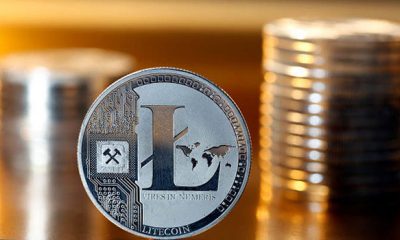Over the past two months, the news has been rife with stories about Bitcoin ETF applications situated within the United States Securities and Exchange Commission (SEC). We all know that the general goal of the Bitcoin ETF is to make it easier for institutional investors to invest in Bitcoin and we know that the SEC are responsible for giving such applications the go ahead. The last thing we know is that when the SEC reject ETF applications, the markets act negatively, therefore we can guess that if the SEC accept an ETF application, the markets will fly high.
In essence, the markets are very sensitive to the Bitcoin ETF decisions, however in order to understand why this is the case, we need to understand the Bitcoin ETF model on a fundamental level.
What on earth is a Bitcoin ETF?
ETF stands for Exchange Traded Fund, therefore an ETF is a security that tracks another index. ETFs trade on traditional stock exchanges and change in value as a result of buying and selling.
According to Investopedia:
“An ETF is a type of fund that owns the underlying assets (shares of stock, bonds, oil futures, gold bars, foreign currency, etc.) and divides ownership of those assets into shares. The ownership of the fund can easily be bought, sold or transferred in much the same way as shares of stock, since ETF shares are traded on public stock exchanges.”
Within Bitcoin specifically, the Bitcoin ETF will act as a fund that owns the underlying asset of Bitcoin and will be able to divide the ownership of that Bitcoin into shares which in turn can be bought by investors and institutions.
You might wonder then, if this is the case, why don’t institutional investors just cut out the middleman and invest in Bitcoin directly, what’s the point in going through an ETF:
“A bitcoin ETF is one that mimics the price of the most popular digital currency in the world. This allows investors to buy into the ETF without going through the complicated process of trading bitcoin itself. Moreover, because holders of the ETF won’t be directly invested in bitcoin itself, they will not have to worry about the complex storage and security procedures required of cryptocurrency investors.”
In essence, direct Bitcoin investment is complicated and risky, the ETF format takes away a lot of the effort and of course the risk, making it more attractive to institutional investors. Within this institutional investors won’t have to navigate complicated security parameters and they won’t even have to deal with the crypto exchanges themselves either. So in essence, though the ETF looks like a middleman, it still skips out a big chunk of the traditional Bitcoin investment process.
Most importantly:
“ETFs are much better understood across the investment world than cryptocurrencies, even as digital coins and tokens have become increasingly popular in recent years. An investor looking to get involved in the digital currency space but without the time necessary to learn about all of the ins and outs could focus on trading a vehicle he or she is likely to have a better understanding of already.”
Institutions get how ETFs work, so, it makes sense to build a Bitcoin product to suit their needs right?
This all sounds great, why don’t the SEC like the idea of a Bitcoin ETF?
This is when it gets a little complicated. On paper, it seems like a great idea but it’s actually a lot more complex than it sounds. Let’s look at why one of the most prolific applications, the Gemini Exchange ETF, was rejected – simply put the SEC believe that the problem with Bitcoin ETFs isn’t the ETF model, its the fact that Bitcoin is still traded on unregulated exchanges and is therefore susceptible to manipulation.
It seems that the SEC aren’t so concerned about the ETF platform, they are actually concerned about Bitcoin as the asset linked to the ETF.
According to Goldseek, this isn’t exclusive to just Bitcoin either, worldwide many ETF applications are rejected simply because the asset they are linked to isn’t considered to be secure enough:
“This logic used by the SEC needn’t just apply to bitcoin. It might explain why there is no rhodium ETF in the U.S., for instance, whereas there is one in both Europe and South Africa. Since there is no exchange that offers rhodium futures and the spot market is relatively opaque, it would not be possible for an SEC-regulated exchange to set up the information sharing agreements necessary for SEC approval of a rhodium-based financial product. This echoes what I said at the outset: the SEC’s decision is less about bitcoin and more about grappling with the complexity of market structure in an age in which financial magicians are trying to package everything into an exchange-traded product.”
So, what’s the outlook for the future?
It’s very uncertain. The state of the Bitcoin ETF applications is very much in limbo at the moment, we can’t tell when or if these applications will be approved, though we do know that in September a number of decisions are set to be made.
We are optimistic that a Bitcoin ETF will be approved by the SEC soon enough, one reason for this is that the SEC are now seeking public opinion, something that would only be relevant if the SEC intended to see a Bitcoin ETF through to some sort of approval, according to Investopedia:
“The SEC has also opened up bitcoin ETF applications to public comments, with the vast majority of commenters voicing their approval for the new product. If and when the first bitcoin ETFs are launched, it’s likely that they will see early success, as both cryptocurrency enthusiasts and traditional investors take part. In turn, the rise of bitcoin ETFs could also help to fuel gains in bitcoin as well, and, because many other digital currencies are closely tied to the performance of bitcoin, gains across the cryptocurrency market.”
Bitcoin will see an ETF in the future, if not this month, maybe it will be next month. Or perhaps we won’t see one approved for a few years. One thing is for sure, when a Bitcoin ETF is approved, Bitcoin will fly high and the markets will finally open up to high level and high value institutional investment. The future of Bitcoin is certainly within the Bitcoin ETF and it’s a future we are all very excited about.

 Crypto6 years ago
Crypto6 years ago
 What is... ?7 years ago
What is... ?7 years ago
 Crypto6 years ago
Crypto6 years ago
 What is... ?7 years ago
What is... ?7 years ago
 Crypto6 years ago
Crypto6 years ago
 Bitcoin6 years ago
Bitcoin6 years ago
 Bitcoin6 years ago
Bitcoin6 years ago
 Crypto6 years ago
Crypto6 years ago


















